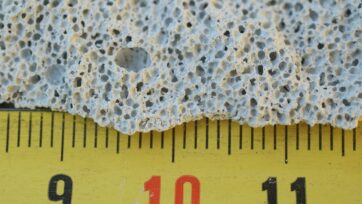(Image credit: Belur Ashok)
Researchers from Macquarie University have achieved a significant breakthrough in wave scattering simulation, potentially advancing the development of metamaterials, including innovative technologies like invisibility cloaks. This progress has been made possible through the creation of a new software tool, TMATSOLVER, which models the interactions between waves—such as sound, water, or light—and complex particle configurations.
The software is designed to simulate how waves scatter when they encounter a variety of complex shapes and sizes, improving the speed and accuracy of designing metamaterials. Metamaterials are artificial materials that can control and manipulate waves in ways that natural materials cannot. These materials hold immense potential in various applications, including super-lenses, invisibility cloaks, and wave absorption technologies.
TMATSOLVER uses a technique called the transition matrix (T-matrix), which has been in use since the 1960s to describe how an object scatters waves. However, this new software takes a significant leap forward by being able to compute T-matrices for much larger and more complex shapes than previously possible. As a result, researchers can now simulate particle configurations that were too complex to address before.
Lead researcher Dr. Stuart Hawkins, from Macquarie University’s Department of Mathematics and Statistics, explained that this advance would significantly speed up the prototyping and validation of new metamaterial designs. Collaborating with international mathematicians from institutions such as the University of Adelaide, the University of Manchester, and Imperial College London, the team demonstrated the software’s effectiveness across several metamaterial design challenges.
Applications in Metamaterial Design
The research team demonstrated TMATSOLVER’s capabilities by tackling four complex problems in metamaterial design. These included simulating arrays of anisotropic particles, high-contrast square particles, and tuneable periodic structures that slow down wave propagation. Such developments have far-reaching implications in industries focused on wave control and manipulation, such as telecommunications, defense, and energy harvesting.
Metamaterials, designed with properties not found in nature, are used to interact with waves in unique ways by controlling the size, shape, and arrangement of their nanoscale structures. The TMATSOLVER tool has the potential to accelerate research in this area, enabling rapid prototyping of new metamaterials that can deflect, amplify, or absorb waves.
Examples of practical applications include creating super-lenses capable of viewing objects at the molecular scale, invisibility cloaks that refract visible light, and devices for energy harvesting or noise reduction.
Professor Lucy Marshall, Executive Dean of the Faculty of Science and Engineering at Macquarie University, highlighted the significance of this innovation, stating that it represents a major advancement in the ability to design and simulate complex metamaterials. She emphasized that this is an example of how innovative computational tools can drive progress in materials science and engineering.
References
2024, ‘Invisibility cloaks? Wave scattering simulation unlocks potential for advanced metamaterials’, Science Daily, viewed 16th September 2024, <https://www.sciencedaily.com/releases/2024/09/240912135948.htm>
Hawkins Stuart C., Bennetts Luke G., Nethercote Matthew A., Peter Malte A., Peterseim Daniel, Putley Henry J. and Verfürth Barbara 2024, ‘Wave Simulation Unlocks Potential Metamaterials’, Macquarie University Sydney Australia, viewed 16th September 2024, <https://www.mq.edu.au/faculty-of-science-and-engineering/news/news/wave-scattering-simulation>

























